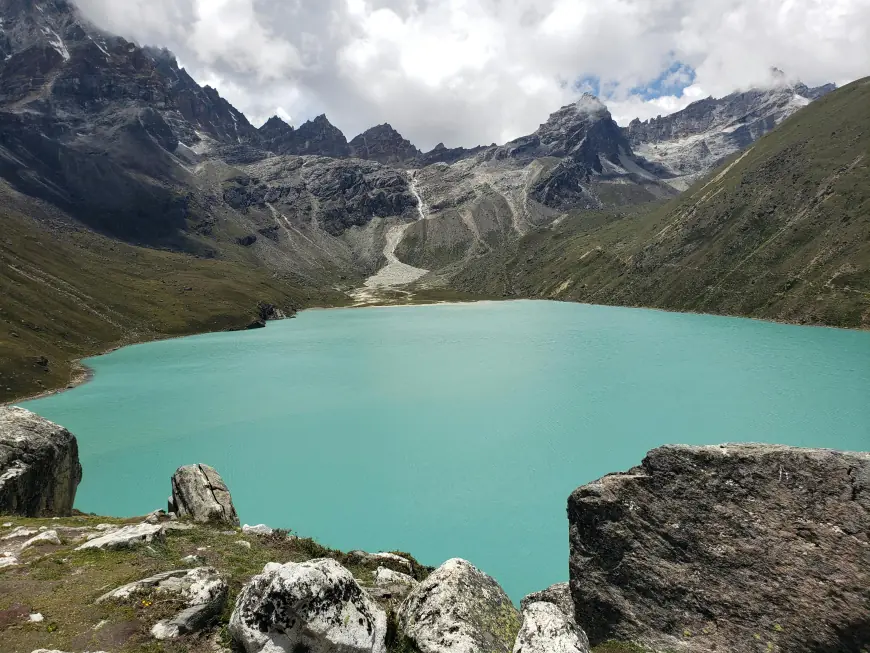The History of Gokyo Ri Trek: A Journey to Nepal’s Iconic Peak
Discover the history and significance of the Gokyo Ri Trek, offering stunning views of Everest and surrounding peaks, along with rich cultural insights from the Khumbu region.

Introduction
The Gokyo Ri Trek is a spectacular trekking journey in the Everest region, known for offering some of the best panoramic views of the Himalayas, including Mount Everest, Makalu, and Cho Oyu. Standing at 5,357 meters (17,575 feet), Gokyo Ri is a prominent peak that serves as a viewpoint for trekkers exploring the Gokyo Valley. The trek has become a popular alternative to the traditional Everest Base Camp trek for those seeking a quieter route with equally impressive views. But like many trekking routes in Nepal, Gokyo Ri has an interesting history, with its roots intertwined with the early expeditions to Mount Everest and the development of trekking in Nepal.
1. Origins of the Gokyo Valley and Gokyo Ri
The Gokyo Valley, where Gokyo Ri is located, was largely unknown to the outside world until the early 20th century. It was mainly a remote region inhabited by Sherpas, who used it as a grazing area for livestock. The area started gaining international attention during the 1930s as mountaineering expeditions began exploring the region around Mount Everest.
The first documented exploration of the Gokyo Valley occurred during George Mallory’s early expeditions in the 1920s, though it was not until the 1950s that the valley started receiving more attention, especially after the successful ascent of Mount Everest by Sir Edmund Hillary and Tenzing Norgay.
However, the Gokyo Ri itself was not widely visited until trekking became a popular activity in Nepal during the 1970s. It was during this time that the idea of trekking to Gokyo Ri became more widespread as part of the Everest region trekking circuit.
2. The Role of Gokyo Ri in Everest Expeditions
Gokyo Ri's rise in popularity is closely tied to its strategic location as a viewpoint for Everest and its surrounding peaks. After the successful ascent of Everest in 1953, trekkers, mountaineers, and adventurers began flocking to Nepal to explore the Everest region. Gokyo Ri, with its incredible vantage point, was slowly integrated into trekking itineraries for those who wanted a quieter, less crowded experience than the traditional Everest Base Camp trek.
The Gokyo Lakes, located at the base of Gokyo Ri, also became a major attraction for trekkers. These glacial lakes, with their turquoise waters, are a natural wonder and have added to the appeal of the Gokyo Valley. As more and more trekkers discovered the region, Gokyo Ri emerged as one of the premier trekking destinations in Nepal, offering an alternative way to experience the Himalayan beauty without the high traffic of the Everest Base Camp route.
3. Gokyo Ri Trek in the Modern Era
In recent decades, the Gokyo Ri Trek has seen a steady increase in popularity, particularly after it was featured in trekking guides as a prime destination for views of Everest and other Himalayan peaks. It became part of the now-famous Gokyo-Everest Loop, which combines the beauty of the Gokyo Valley with the iconic Everest Base Camp trek. This loop offers trekkers a chance to see Everest from both the traditional base camp and the viewpoint at Gokyo Ri, providing more variety and fewer crowds.
The development of infrastructure in the region, such as tea houses and improved trekking routes, has also made the trek more accessible to both novice and experienced trekkers. However, despite its rise in popularity, the Gokyo Ri trek still retains its serene atmosphere, making it an attractive option for trekkers seeking solitude and breathtaking views.
4. Gokyo Ri’s Cultural Significance
The Gokyo Ri trek also passes through various Sherpa villages, providing trekkers with insight into the Sherpa culture. The Sherpa people, who have long been associated with mountaineering and the Everest region, consider the Gokyo area sacred, as it is surrounded by many monasteries and spiritual sites.
The Gokyo Lakes are regarded as sacred by the Sherpas and other local communities, with the annual Janai Purnima festival being a highlight where locals perform religious rituals at the lakes.
5. The Gokyo Ri Trek Today
Today, the Gokyo Ri trek is a key part of the Everest region trekking circuit. It attracts trekkers who seek stunning mountain views and wish to experience the remote beauty of the Khumbu region away from the crowds. With its stunning panoramas of Mount Everest, Lhotse, Makalu, and Cho Oyu, as well as the picturesque Gokyo Lakes, the Gokyo Ri trek remains one of Nepal's most remarkable trekking experiences.
Conclusion
The Gokyo Ri Trek has a fascinating history, from its early exploration in the 1930s to its rise as a popular trekking route in the 1970s. As an alternative to the traditional Everest Base Camp trek, it offers trekkers a chance to experience some of the best views of Mount Everest and the surrounding peaks in a quieter, more serene environment. The trek’s cultural significance, spectacular vistas, and relatively peaceful atmosphere continue to make it a must-do for those visiting Nepal.
What's Your Reaction?
 Like
0
Like
0
 Dislike
0
Dislike
0
 Love
0
Love
0
 Funny
0
Funny
0
 Angry
0
Angry
0
 Sad
0
Sad
0
 Wow
0
Wow
0
























































